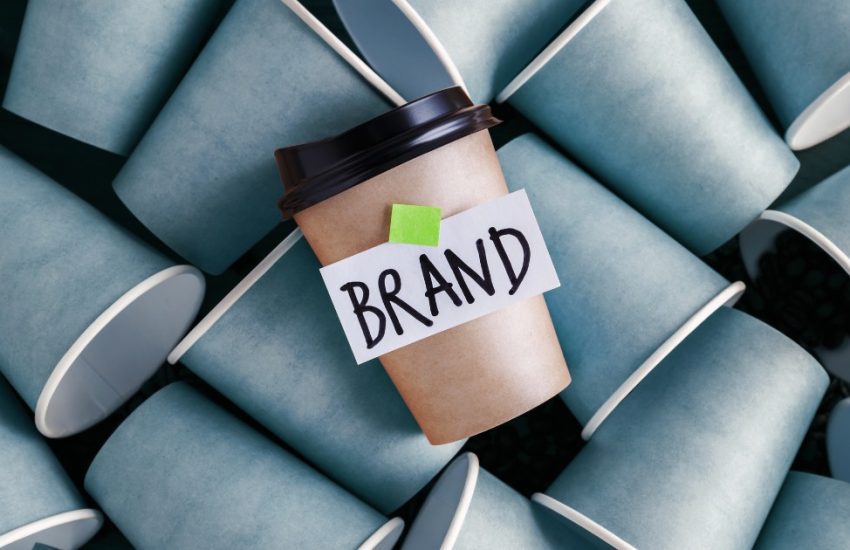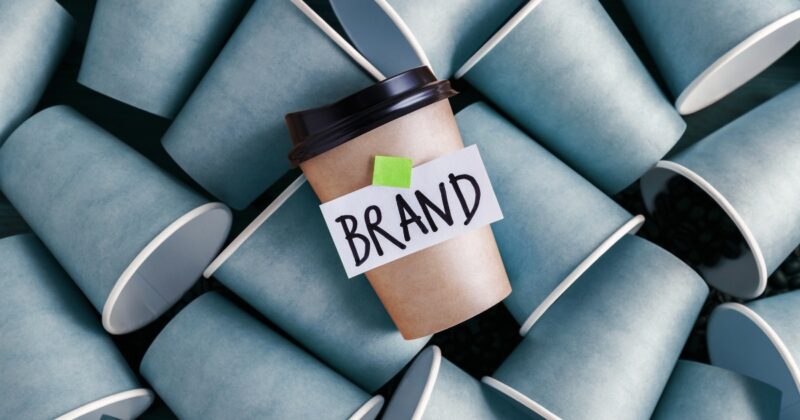Your brand identity is how people see your brand. Building a strong brand identity helps you position yourself to your target audience in the best way. Developing a brand identity can be complicated. Hence, to make the process easier for you, I’ve rounded up these steps [and associated tools] to help you craft a compelling brand identity for your business.
So, what is a brand identity? It’s the sum of the visual, emotional, and physical representation your brand has in the world. Whether you’re looking to build a new business or rebrand an existing business, you’ll need to craft a brand identity that helps differentiate yourself from other competitors in the market. So, let’s get on with it.
Conduct Market Research
The first step to building your brand identity is discovering your market. Your tool is market research! When you analyze the market, you find what the market gaps really are, and how you can position your brand to bridge those gaps.


What I’m saying here is, you also need to take a look at competition and see what engages your target audience. Do they like positive brands? Or, do they like brands with a little mystery?
You can do thorough market research through surveys, personal interviews, and government resources. Don’t know where to begin?
Market Survey Tools
For starters, begin online and later take advantage of these tools:
#1. Google Forms
Google Forms is a free online tool from Google to create surveys, forms, and quizzes for market research. All you have to do is create a Google form, share it in the right circles, and you’d have connected with your TG.
#2. Paperform
Paperform can help you make polls, subscription forms, surveys, web forms, quizzes, tests, and orders. You can also get help with digital signatures, scheduling, and booking management once you have established your brand identity.
#3. SurveyMonkey
SurveyMonkey is a free survey making tool that can also help you with polls, registration forms, and employee feedback. If you’re in healthcare, marketing, IT, education, or product sectors, they’ll also have templates to help in their paid plans.
Jotform, Typeform, and Formstack can also help with online surveys!
You can conduct surveys to know what color schemes work for your audience, what fonts do they like, and what’s the tonality in a brand that makes them jump! Online surveys can make you decide on brand identity components and visual branding elements.
Identify Your Target Audience
When you’re building a brand identity, you need to decide who you’re building that brand for. In fact, most brands and businesses overlook the importance of identifying a target audience in the earlier stages. But that only slows them down later on.
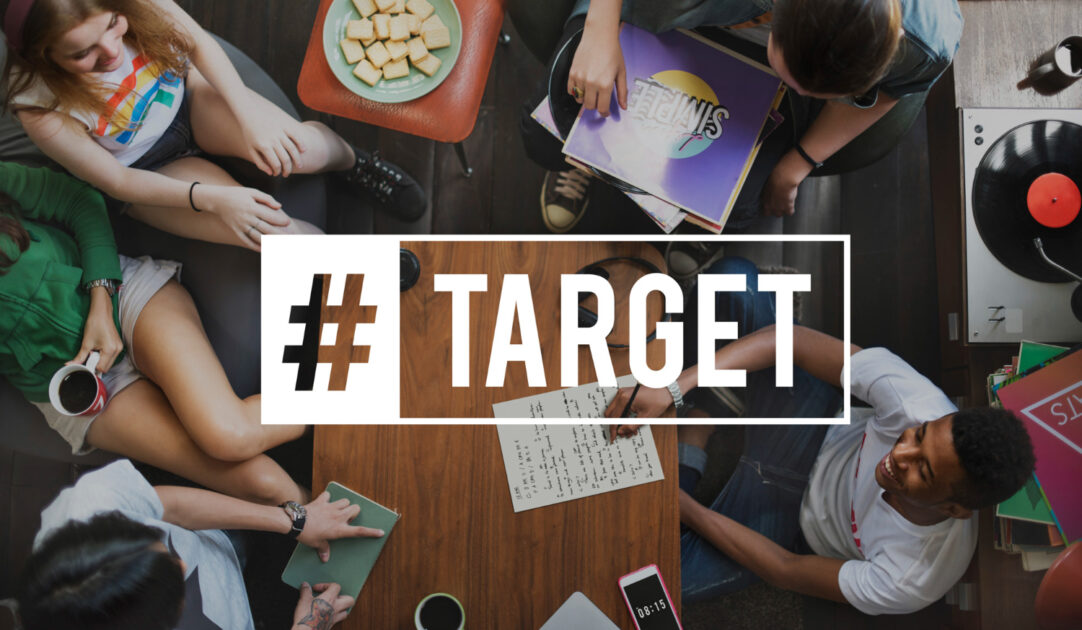



If you know who you’re building a brand for, it becomes easier to engage with your audience and give them what they need. Moreover, if you try to sell to everyone, you might end up selling to no one. Hence, it’s best to zero in on your ideal target audience so that you can solve their pain points and be one step closer to your brand identity.
Personalized experiences form the core of marketing and sales for businesses now (both B2B and B2C). According to SlideShare, 80% of consumers are more likely to buy from a business that provides personalized experiences. In fact, companies who incorporated personalized marketing into their brand experiences did 66% better over the course of a year.
For example, if you’re creating an HR consulting company that helps recruit brilliant candidates for IT companies, you should target IT companies. You shouldn’t go after creative agencies or marketing firms. Hence, your brand identity should focus on that!
Target Audience Research Tools
#1. AnswerThePublic
AnswerThePublic is a free research tool that’s a goldmine for consumer insights.
You can enter a topic or a keyword, and it’ll tell you who can be your ideal target audience, what are their pain points, and what are they thinking.
#2. Google Trends
Google Trends is also a great place to start with market research for identifying target audience.
In fact, you can explore real-life issues and details in more detail.
#3. Audiense
Audiense can not only help you identify target audience with its advanced audience segmentation and omnichannel social media listening, but also influencer and Twitter marketing.
Establish Your Brand’s Purpose
Determining your brand’s purpose is the same as finding your company’s mission statement. You find out where your brand fits in the market, and what’s your point of difference.




In fact, if you’re having trouble establishing what’s your brand identity, consider answering these two questions:
- Why does your company exist?
- What problem is your company solving?
Once you have answered these questions, you can compare your brands to other brands in the market and find what is it that you’re doing differently. Are you offering premium products at an affordable rate? Or, are you offering a better version of a necessary product?
Find your brand differentiator — and you’d have found a path to discovering your brand identity. You can use competitor research tools to see where you fit in.
Find a Brand Personality That Resonates
Brand personality is a framework within which companies outline how they want their customers to feel about them. Do you want to evoke positive emotions? Do you want to inspire customers? Or, do you want to connect with other businesses because you offer maximum efficiency? All of these questions about crafting a brand personality will ultimately lead you to your brand identity!




Often people confuse brand personality with brand aesthetic (more on that later). Brand aesthetic is your logo, or imagery. But brand personality is how you present yourself, as a brand. It’s where your brand aesthetic or visual components come from.
Now, why’s brand personality important? It helps your audience connect with you better! Apple is premium or minimalist. Dropbox is vibrant, whereas Uber has a professional brand identity with a complementing monochrome aesthetic.
Tool for Finding Brand Personality
Google’s brand identity is simple and friendly. Nike is playful and athletic. Struggling to find your brand? Try a tool!
#1. Brandergate
You can use Brandergate‘s 4D personality framework to discover your brand identity and major traits. And it’s free!
Discover Your Brand Colors to Create a Visual Identity
If you have figured out your brand identity, it shouldn’t be difficult to figure out what your brand aesthetic should be like.




Start off with colors. What colors work for your audience?
Color Tools
More importantly, which colors work well together? Pick brand colors that complement your brand identity with these tools:
#1. Coolors
Coolors can help you generate color palettes that work together. This will help you envision which color palettes go well together. It’s as easy as pressing the space bar.
#2. Adobe Color
You can also use Adobe’s Color Wheel to see which color palettes work together in a harmony. You can also use its accessibility tools to make your brand more accessible in terms of typography, color, and size.
#3. Color Hex
Color Hex can help you come with color palettes that fit in with your brand identity. Not only that, Color Hex is useful for seeing user favorites and web popular colors.
Color psychology is powerful and you can use it to your advantage. So, consider reading up on color meanings and how they can inform your brand identity:
This should help you get a good start on colors and what reactions they could evoke in your target audience.
Choose Fonts and Typography
Typography is how your written brand communication appears — in print or digital media. Think brochures, infographics, images, and anywhere else your logo appears! So, a typography involves fonts, sizes, and spacing. A brand identity informs a brand’s typography and vice versa.
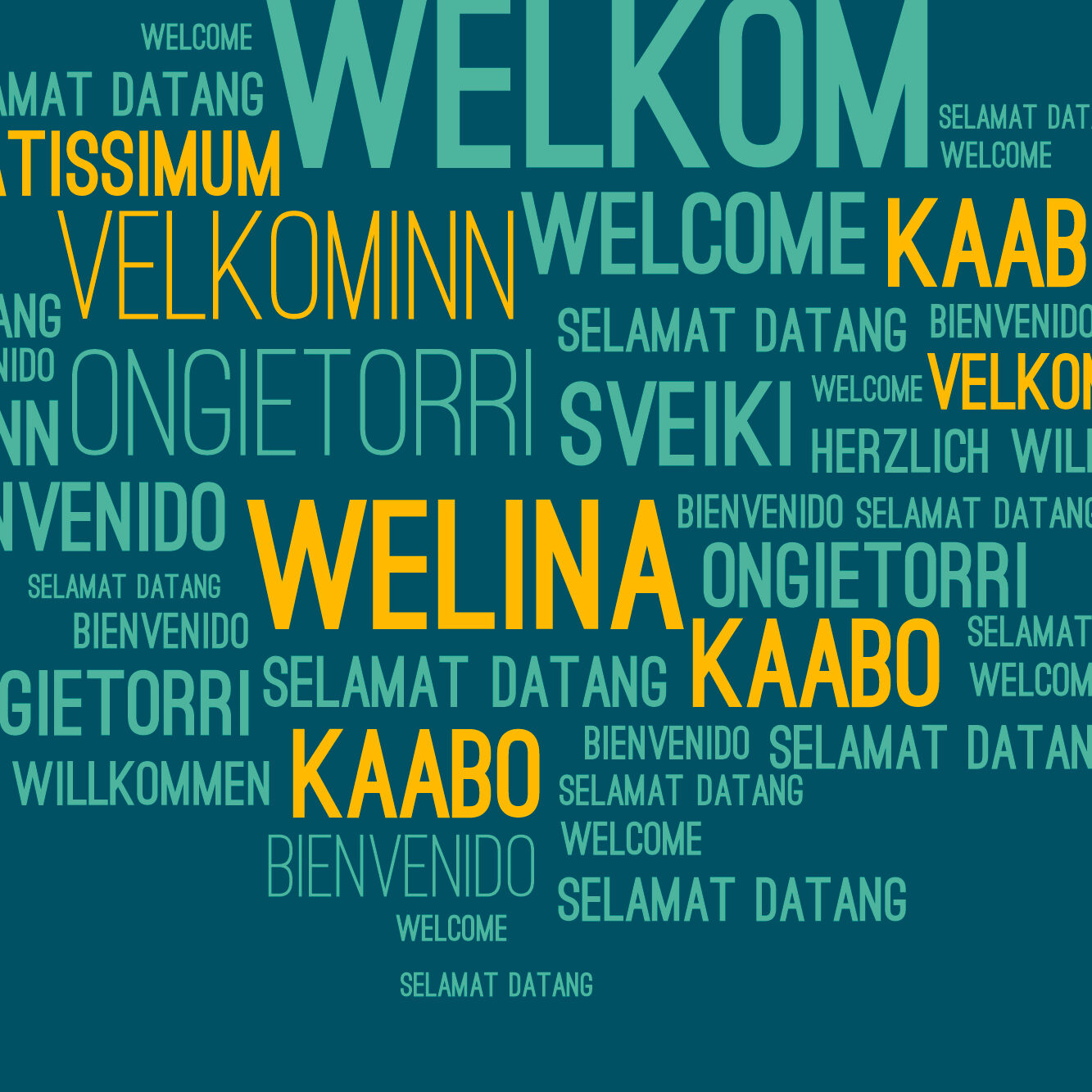



Fonts are of different types: Serif, Sans Serif, Display, and Script. While most businesses find it difficult to incorporate Display or Script fonts in their brand identity (as they’re not legible), you can find the one that matches your identity.
In fact, Serif fonts have decorative lines whereas Sans-Serif are clearer, simple, and straightforward. Display fonts are highly decorated versions, whereas script forms are much like cursive writing.
Here are examples of some brilliant styles associated with the 4 fonts to help you add to your brand identity:
| Serif Fonts | Sans-Serif Fonts | Display Fonts | Script Fonts |
|---|---|---|---|
| Times New Roman | Arial | Bright Melody | Cream Cake |
| Garamond | Helvetica | ITC Avant Garde Gothic | Saturday |
| Georgia | Roboto | Sofia-pro | Caveat |
| Cambria | Verdana | Campton | Dancing Script |
| EB Garamond | Calibri | Recoleta | Pinyon Script |
Typography Tools
There are many fonts that can take your brand identity up a notch. Discovering them can be hard, start with these tools:
#1. Discover.typography
Discover.typography is incredibly easy to use. You can click on their homepage — anywhere you like, and you’ll find numerous options within that category. You can click on each font you like to see its details.
#2. Archetype
Archetype has a three-step process to help you pick fonts, determine sizes, and adjust spacing. It’s a great tool to support your brand identity, regardless of which phase of business you’re in!
Design Your Brand Logo
Your brand colors, brand typography, and personality will come together to make your brand logo, which is the backbone of your brand visual identity.




It’s what your audience or consumers will see most of you. It’ll become the visual with which everyone recognizes your brand. Hence, it’s crucial. However, brands rebrand their logos all the time!
Logo Design Tools (With AI)
So, start somewhere and don’t be afraid to be bold. Take the help of these tools to create a logo that goes with your brand identity:
#1. Looka
Looka has a free AI logo maker that can help you design a logo, if you don’t have a designer, or the skills to do it yourself.
In fact, Looka also has a wide range of logo colors, logo styles, and logo ideas to inspire you.
#2. logomaster.ai
logomaster.ai is a free AI logo maker tool that generates logos for your business or brand. You can review AI-generated templates, and customize them easily.
#3. Designs.ai Logomaker
Another AI logo generator, Designs.ai Logomaker is free to try with its advanced AI and 10,000+ icons.
Logo Design Tools (Without AI)
#1. Canva
Canva is also a quite common choice among free logo makers online.
It has a simple drag-and-drop editor to help non-designers.
#2. Logo Makr
Logo Makr‘s free and lets you build on popular templates to create professional logos in a few seconds.
Develop a Brand Voice
Your brand voice is the language you’d use to talk to your customers. Do you want to sound professional, as a brand? Or, do you want to sound playful and friendly? Your brand voice is closely linked to your brand identity. You can’t be a playful brand and have a serious brand voice.




Hence, it’s crucial to have a brand identity and brand voice in sync. So, how to find your brand voice?
- Discover what your target audience interacts with the most
- Determine who you’re not
- Find adjectives that help you understand where your brand falls
Remember, once you finalize on this, you can’t keep switching or changing tone as otherwise it would confuse your audience.
Brand Voice Generator Tools
You can use contrasting adjectives to position yourself: serious vs. casual, respectful vs. demeaning, funny vs. professional, enthusiastic vs. factual, thoughtful vs. playful. See where you’re on the spectrum and take it from there. If you’re having trouble, consider these tools:
#1. Portent’s Tone of Voice Generator
You can use Portent’s Tone of Voice Generator to find a language and tone that works for you.
#2. Taskade
Taskade is an AI-powered brand voice generator tool to help you find adjectives that align with your brand identity.
This might not be essential to find your brand identity. However, having a comprehensive brand guidelines toolkit is important for sustaining your brand identity. Also known as a brand style guide, a brand guidelines toolkit should have all advice on how you want to present yourself to other businesses or customers.
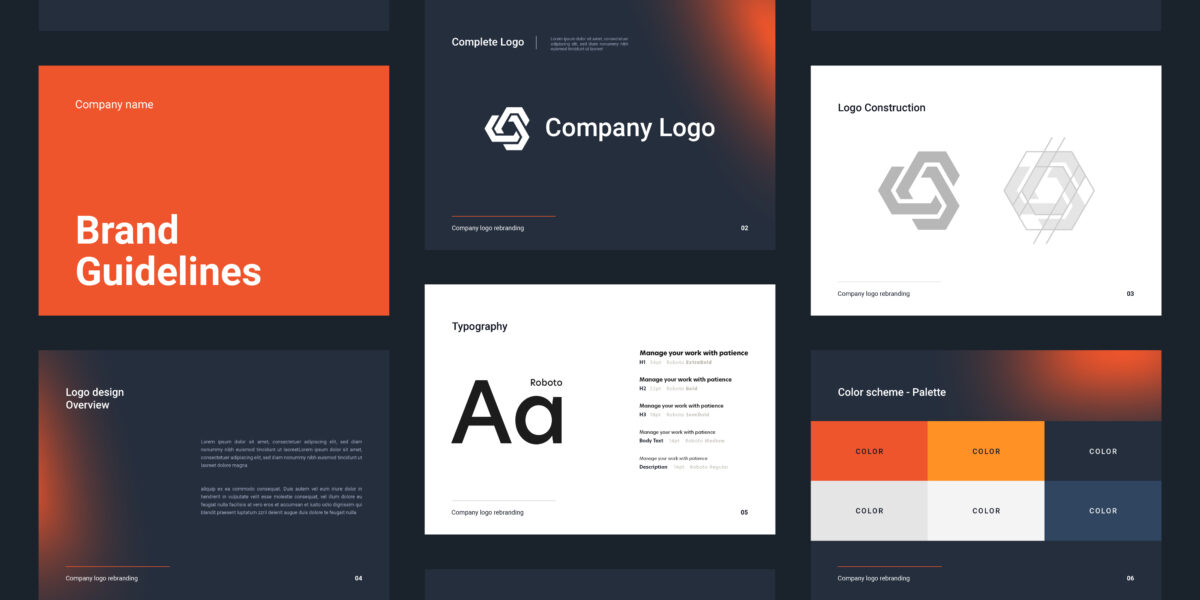



This can include the font you’re choosing, the color palette, the typography you wish to use in different mediums, the brand voice, the social media marketing guidelines, and more! A good brand guidelines toolkit will tell you how to position yourself for any written communication or brand communication:
- How to write your press-releases: font, diction, style, length
- Also, how to create your blogs: tonality, content pillars, size
- How to market your ads and social media comms: fonts, colors, and brand aesthetic
- Also, include detailed guidelines on images: accepted resolutions, stock images, compositions
So, a good brand marketing toolkit, will also tell the brand team where it’s ideal to use an infographic, and where you should stick to illustrations, rather than plain images.
Brand Management Tools
Need help managing brand identity guidelines and brand assets? Consider these:
#1. Frontify
You can use Frontify to keep your digital guidelines in one place.
They are editable, shareable, and also have different assets like images, videos, and brand tag lines. You can whip up something for social in seconds!
#2. Brandpad
Brandpad makes your brand identity digital! It provides this spot for having all your brand guidelines at the same place, and takes care of brand management until the rollout. Your brand guidelines can have associated assets and specifications required to make every project a success.
Monitor Brand Sentiment
Again, not crucial to forming brand identity, maintaining brand sentiment and knowing how people are feeling about you is crucial to sustaining a good brand identity.




When you monitor brand sentiment from time to time, you spot issues even before they arise! And, you’re able to work towards keeping your customers happy and content.
Brand Monitoring Tools
Thankfully, there are tools that can help you monitor brand sentiment these days:
#1. Brand24
Brand24 can gather consumer insights from 25 million sources and analyze online sentiments to see how people are feeling about your business.
You can create reports to inform your social media policies and PR efforts.
#2. Locobuzz
Locobuzz is a brand monitoring tool that has real-time social media listening. You can use it to evolve business strategy and stay on top of market needs.
Next, Create Branded Content to Keep Yourself Going
If you have developed your brand identity already, wrapped up branding elements (logo, typography) and created brand assets, the next step on your brand building journey is to create branded content.
During my time as a brand marketing professional, I saw many brands mistake branded content as an area to promote their brand blatantly. Be subtle with the promotions and use branded content to educate and inform your audience.
Si quiere puede hacernos una donación por el trabajo que hacemos, lo apreciaremos mucho.
Direcciones de Billetera:
- BTC: 14xsuQRtT3Abek4zgDWZxJXs9VRdwxyPUS
- USDT: TQmV9FyrcpeaZMro3M1yeEHnNjv7xKZDNe
- BNB: 0x2fdb9034507b6d505d351a6f59d877040d0edb0f
- DOGE: D5SZesmFQGYVkE5trYYLF8hNPBgXgYcmrx
También puede seguirnos en nuestras Redes sociales para mantenerse al tanto de los últimos post de la web:
- Telegram
Disclaimer: En Cryptoshitcompra.com no nos hacemos responsables de ninguna inversión de ningún visitante, nosotros simplemente damos información sobre Tokens, juegos NFT y criptomonedas, no recomendamos inversiones

